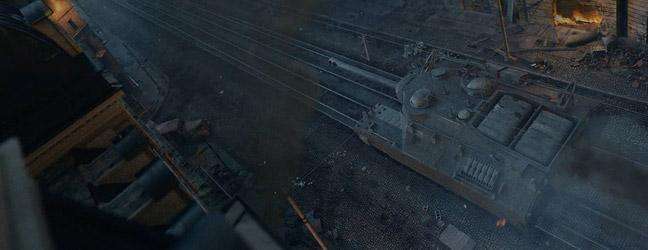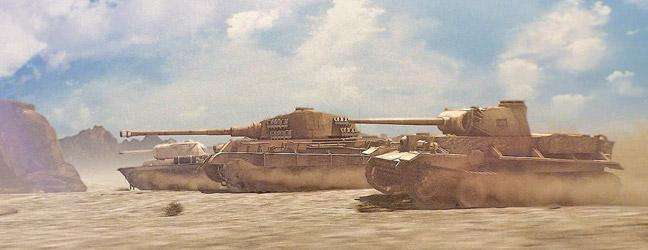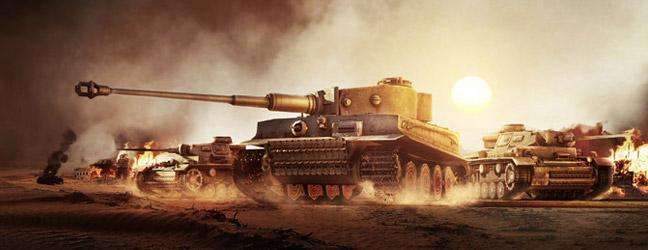The Battle of Moscow
Дата: 14.10.2011 17:12:53
admin: The Battle of Moscow (30 Sep 1941 - 7 Jan 1942) – the series
of defensive operations conducted by the Red Army to protect the
Soviet capital of Moscow and the subsequent counter-offensive
against the German army, between October 1941 and January 1942 on
the Eastern Front of World War II.

Battle of Moscow - The German invasion
On 22 June 1941 German armed forces and its Axis allies invaded the Soviet Union without declaration of war, taking the Soviet political leadership, and hence most of the Red Army, completely by surprise. Having destroyed most of the Soviet air force on the ground (as it was situated in the border line), German forces quickly advanced deep into Soviet territory using Blitzkrieg tactics. Armored units rushed forward in pincer movements trapping and destroying entire Soviet armies. The plan of invasion - “Barbarossa” – supposed the development of offensive in three directions: the German Army Group North moved towards Leningrad, and Army Group South went on to conquer Ukraine, Army Group Centre was to advance towards Moscow.


The Red Army defense counter-actions were catastrophic, and the casualties were enormous. As a result, in early August 1941 the Germans captured the city of Smolensk, an important stronghold on the road to Moscow, but the engagement in the Smolensk area blocked the German advance until mid-September, effectively disrupting the blitzkrieg. Moving forward again, Heinz Guderian's Panzer Army reached the outskirts of Moscow area, at which point Hitler commanded him to turn south and support Gerd von Rundstedt's attack on Kiev. On October 2, 1941, Army Group Centre under Fedor von Bock finally launched its offensive to Moscow, code-named Operation Typhoon.
The Soviet forces of the Western Front, Reserve Front, Bryansk Front and Kalinin Front, defending the Moscow area, suffered heavy casualties but kept fighting fiercely. On October 10, Georgi Zhukov took charge of the Western Front and the defence of Moscow.
../wp-content/uploads/2011/10/0783-300x225.jpg

Battle of Moscow - The defensive phase
The plans for Operation Typhoon implicated a double-pincer movement against the Soviet Western and Reserve Fronts near Vyazma. The second force moved to the south to capture Bryansk. If the success of these maneuvers granted, German forces would advance to encircle Moscow and hopefully enforce the Soviet leader Joseph Stalin to make peace. Though reasonably sound on paper, the plans for Operation Typhoon failed taking into account the fact that German forces were battered after several months of campaigning and that their supply lines were having difficulty getting goods to the front (they also ignored the condition of Russian roads and weather factor).
The 2nd German Army on the South, broke through defense of the 50th Soviet Army, captured Bryansk in late September 1941. And following it, Orel was seized on October 3. Exploiting the success, the German forces then tried to advance along the Orel-Tula line. Storming forward to the West of Moscow, two German panzer groups quickly made gains near Vyazma and encircled four Soviet armies on October 10. Rather than surrendering, the Soviet 19th, 20th, 24th, and 32nd Armies tenaciously continued the fight, slowing the German advance and forcing Bock to divert troops to aid in reducing the pocket. Vyazma was captured on October, 13. According to the German sources, more than 650,000 Soviet prisoners of war were taken in this battle.
On October 7, the first snow of the season fell. This soon melted. The roads turned to mud and severely hampering German operations. Progressing forward, Bock's troops turned back numerous Soviet counterattacks and reached the Mozhaisk defenses by October 10. That same day, Stalin recalled Marshal Georgy Zhukov, the commander of the Siege of Leningrad at this period, and directed him to oversee the defense of Moscow. Assuming command, he focused Soviet manpower in the Mozhaisk line.

Kalinin was seized on December, 4. Nearly at the same time, Tula, a small town 165 km south of Moscow was taken on December, 5. By the end of October the line of front was established on a boundary: Kalinin — Volokolamsk — Kubinka — Naro-Fominsk — Serpukhov — Tarusa — Aleksin — Tula.
Despite the fact that the Soviet army was substantially outnumbered, Zhukov deployed his men at key points in the line at Volokolamsk, Mozhaisk, Maloyaroslavets, and Kaluga. Resuming his advance on October 13, Bock sought to avoid the bulk of the Soviet defenses by moving against Kalinin in the north and Kaluga and Tula in the south. While the first two were seized quickly, the Soviets succeeded in holding Tula. After frontal attacks and capture of Mozhaisk and Maloyaroslavets on the 18th and subsequent German advances, Zhukov was forced to fall back behind the Nara River. Though the Germans made gains, their forces were badly worn down and were plagued by logistical issues.
../wp-content/uploads/2011/10/OborSev014-300x225.jpg
Moscow now started to become the target of German massive air raids. The population of the Soviet capital was ordered to build barricades in the city's streets, even in the close proximity of the Kremlin itself. The majority of the Soviet government members was evacuated east to the city of Kuybyshev (Samara nowadays), but the Soviet leader Stalin remained in Moscow to set an example of determination for the soldiers and increasingly despairing civilians, he ordered the traditional military parade on 7 November, commemorating the anniversary of the October Revolution, to be conducted on the Red Square, in spite of the danger of German bombardment. The troops paraded along the Kremlin and then marched directly to the battlefront.

Meanwhile, the progress of the German armies was already slowing down. The Germans had been almost paralyzed when the autumn rains set in, turning roads into stretches of mud. When the frost set in early November, the Germans could use the roads again, but faced the problem of not being well equipped for winter war conduct, as Hitler had expected a quick victory by the end of the summer 1941. Warm clothing and white winter camouflage suits were lacking, and more and more tanks and other vehicles were immobilized as temperatures dropped below freezing and German tanks were not prepared for such conditions. Indeed, the winter of 1941-1942 was unusually cold even by Russian standards and it absolutely was the advantage to the Red Army.
While German troops lacked appropriate winter uniform, they also took losses to the new T-34 tank which was obviously superior to their Panzer IVs. By November 15, the ground had frozen and mud ceased to be an issue. Seeking to end the campaign, Bock directed 3rd and 4th Panzer Armies to encircle Moscow from the north, while Guderian moved around the city from the south. Rolling forward, German forces were slowed by the Soviet defenses but succeeded in taking Klin on 24th and four days later crossed the Moscow-Volga Canal before being pushed back. In the south, Guderian bypassed Tula and took Stalinogorsk on November 22.

Soviet defense on the approaches to Moscow grew increasingly desperate. The Soviets sent in thousands of recruits and volunteers from among Moscow cotizens, even women's battalions were involved into the Capital defense. It was in front of Moscow where the term “Panfilovets” was born: Ivan Panfilov, commander of the Soviet 316th Rifle Division, died in fierce self-sacrificing infantry combat against German tanks. Only a handful of heavily wounded Soviet soldiers survived the carnage; large numbers of German soldiers were killed as well.
On December 2, a German reconnaissance unit reached the Khimki – a small town only five miles from Moscow. This marked the furthest German advance. With temperatures reaching -50 degrees, and still lacking winter equipment, the Germans were forced to halt their offensives.
Battle of Moscow - The Soviet counter-offensive
On 5 December 1941, Zhukov launched a massive Soviet counter-attack against the German forces, with the biggest offensive launched against Army Group Centre. The offensive unfolded in all sectors of the Moscow area on 6 December. During the autumn, Zhukov had been transferring fresh, well-equipped and well-trained Soviet forces from Siberia and the Far East to Moscow, but held them in reserve until the set date of the counter-offensive. The plan was based on intelligence data by Richard Sorge, a German communist and spy who worked for the Soviet Union. This information ensured the High Command of the Red Army that Japan would not attack in the east. Now with the enemy too close to the heart of USSR to ignore, Zhukov threw the reinforcements against the German lines, along with freshly-built T-34 tanks and Katyusha rocket launchers. The new Soviet troops were prepared for winter warfare, and they included several ski battalions. Possessing a reserve of 58 divisions, he unleashed a counter-offensive to push the Germans back from Moscow. The beginning of the attack coincided with Adolf Hitler ordering German forces to assume a defensive stance. Unable to organize a solid defense in their advance positions, the Germans were forced from Kalinin on the 7th and the Soviets moved to envelop the 3rd Panzer Army at Klin. This failed and the Soviets advanced on Rzhev. In the south, Soviet forces relieved pressure on Tula on December 16. Two days later, Bock was sacked in favor of Field Marshal Günther von Kluge. This was largely due to Hitler's anger over German troops conducting a strategic retreat against his wishes. The exhausted and freezing Germans were routed and thrown back 100 to 250 km by 7 January 1942. The Soviet army consolidated their positions by April 1942, having definitely eliminated the German threat to Moscow. The Red army was aided in their efforts by extreme cold and poor weather which minimized the Luftwaffe's operations. As soon as the weather improved in late December and early January the Luftwaffe reseal intensive bombing in support of German ground forces This slowed the enemy advances and by January 7, the Soviet counter-offensive came to an end.

As a result of the successful counter-attack, Tula was taken by the Soviets on December, 16. North of Moscow, Kalinin was taken back on Jaunary 7, 1942. However, Vyazma offensive operation carried out until April 20, 1942 failed eventually. The Germans continued to threaten Moscow from this direction.
The victory in the battle of Moscow provided an important boost for Soviet morale, as the German army had now lost its fame of invincible force. Having failed to defeat the Soviet Union in a quick strike, the German army had to prepare for a long and bloody struggle. The Blitzkrieg didn't succeed.
This part of the war would consume the vast majority of its manpower and resources for the remainder of the conflict. Casualties for the Battle of Moscow are debated, but estimates suggest German losses of between 248,000-400,000 and Soviet losses of between 650,000 and 1,280,000. For the heroism of the city's defenders, Moscow was awarded the title Hero City in 1965, commemorating the 20th anniversary of the eventual Soviet victory over Nazi Germany in 1945.


Battle of Moscow - The German invasion
On 22 June 1941 German armed forces and its Axis allies invaded the Soviet Union without declaration of war, taking the Soviet political leadership, and hence most of the Red Army, completely by surprise. Having destroyed most of the Soviet air force on the ground (as it was situated in the border line), German forces quickly advanced deep into Soviet territory using Blitzkrieg tactics. Armored units rushed forward in pincer movements trapping and destroying entire Soviet armies. The plan of invasion - “Barbarossa” – supposed the development of offensive in three directions: the German Army Group North moved towards Leningrad, and Army Group South went on to conquer Ukraine, Army Group Centre was to advance towards Moscow.


The Red Army defense counter-actions were catastrophic, and the casualties were enormous. As a result, in early August 1941 the Germans captured the city of Smolensk, an important stronghold on the road to Moscow, but the engagement in the Smolensk area blocked the German advance until mid-September, effectively disrupting the blitzkrieg. Moving forward again, Heinz Guderian's Panzer Army reached the outskirts of Moscow area, at which point Hitler commanded him to turn south and support Gerd von Rundstedt's attack on Kiev. On October 2, 1941, Army Group Centre under Fedor von Bock finally launched its offensive to Moscow, code-named Operation Typhoon.
The Soviet forces of the Western Front, Reserve Front, Bryansk Front and Kalinin Front, defending the Moscow area, suffered heavy casualties but kept fighting fiercely. On October 10, Georgi Zhukov took charge of the Western Front and the defence of Moscow.
../wp-content/uploads/2011/10/0783-300x225.jpg

Battle of Moscow - The defensive phase
The plans for Operation Typhoon implicated a double-pincer movement against the Soviet Western and Reserve Fronts near Vyazma. The second force moved to the south to capture Bryansk. If the success of these maneuvers granted, German forces would advance to encircle Moscow and hopefully enforce the Soviet leader Joseph Stalin to make peace. Though reasonably sound on paper, the plans for Operation Typhoon failed taking into account the fact that German forces were battered after several months of campaigning and that their supply lines were having difficulty getting goods to the front (they also ignored the condition of Russian roads and weather factor).
The 2nd German Army on the South, broke through defense of the 50th Soviet Army, captured Bryansk in late September 1941. And following it, Orel was seized on October 3. Exploiting the success, the German forces then tried to advance along the Orel-Tula line. Storming forward to the West of Moscow, two German panzer groups quickly made gains near Vyazma and encircled four Soviet armies on October 10. Rather than surrendering, the Soviet 19th, 20th, 24th, and 32nd Armies tenaciously continued the fight, slowing the German advance and forcing Bock to divert troops to aid in reducing the pocket. Vyazma was captured on October, 13. According to the German sources, more than 650,000 Soviet prisoners of war were taken in this battle.
On October 7, the first snow of the season fell. This soon melted. The roads turned to mud and severely hampering German operations. Progressing forward, Bock's troops turned back numerous Soviet counterattacks and reached the Mozhaisk defenses by October 10. That same day, Stalin recalled Marshal Georgy Zhukov, the commander of the Siege of Leningrad at this period, and directed him to oversee the defense of Moscow. Assuming command, he focused Soviet manpower in the Mozhaisk line.

Kalinin was seized on December, 4. Nearly at the same time, Tula, a small town 165 km south of Moscow was taken on December, 5. By the end of October the line of front was established on a boundary: Kalinin — Volokolamsk — Kubinka — Naro-Fominsk — Serpukhov — Tarusa — Aleksin — Tula.
Despite the fact that the Soviet army was substantially outnumbered, Zhukov deployed his men at key points in the line at Volokolamsk, Mozhaisk, Maloyaroslavets, and Kaluga. Resuming his advance on October 13, Bock sought to avoid the bulk of the Soviet defenses by moving against Kalinin in the north and Kaluga and Tula in the south. While the first two were seized quickly, the Soviets succeeded in holding Tula. After frontal attacks and capture of Mozhaisk and Maloyaroslavets on the 18th and subsequent German advances, Zhukov was forced to fall back behind the Nara River. Though the Germans made gains, their forces were badly worn down and were plagued by logistical issues.
../wp-content/uploads/2011/10/OborSev014-300x225.jpg
Moscow now started to become the target of German massive air raids. The population of the Soviet capital was ordered to build barricades in the city's streets, even in the close proximity of the Kremlin itself. The majority of the Soviet government members was evacuated east to the city of Kuybyshev (Samara nowadays), but the Soviet leader Stalin remained in Moscow to set an example of determination for the soldiers and increasingly despairing civilians, he ordered the traditional military parade on 7 November, commemorating the anniversary of the October Revolution, to be conducted on the Red Square, in spite of the danger of German bombardment. The troops paraded along the Kremlin and then marched directly to the battlefront.

Meanwhile, the progress of the German armies was already slowing down. The Germans had been almost paralyzed when the autumn rains set in, turning roads into stretches of mud. When the frost set in early November, the Germans could use the roads again, but faced the problem of not being well equipped for winter war conduct, as Hitler had expected a quick victory by the end of the summer 1941. Warm clothing and white winter camouflage suits were lacking, and more and more tanks and other vehicles were immobilized as temperatures dropped below freezing and German tanks were not prepared for such conditions. Indeed, the winter of 1941-1942 was unusually cold even by Russian standards and it absolutely was the advantage to the Red Army.
While German troops lacked appropriate winter uniform, they also took losses to the new T-34 tank which was obviously superior to their Panzer IVs. By November 15, the ground had frozen and mud ceased to be an issue. Seeking to end the campaign, Bock directed 3rd and 4th Panzer Armies to encircle Moscow from the north, while Guderian moved around the city from the south. Rolling forward, German forces were slowed by the Soviet defenses but succeeded in taking Klin on 24th and four days later crossed the Moscow-Volga Canal before being pushed back. In the south, Guderian bypassed Tula and took Stalinogorsk on November 22.

Soviet defense on the approaches to Moscow grew increasingly desperate. The Soviets sent in thousands of recruits and volunteers from among Moscow cotizens, even women's battalions were involved into the Capital defense. It was in front of Moscow where the term “Panfilovets” was born: Ivan Panfilov, commander of the Soviet 316th Rifle Division, died in fierce self-sacrificing infantry combat against German tanks. Only a handful of heavily wounded Soviet soldiers survived the carnage; large numbers of German soldiers were killed as well.
On December 2, a German reconnaissance unit reached the Khimki – a small town only five miles from Moscow. This marked the furthest German advance. With temperatures reaching -50 degrees, and still lacking winter equipment, the Germans were forced to halt their offensives.
Battle of Moscow - The Soviet counter-offensive
On 5 December 1941, Zhukov launched a massive Soviet counter-attack against the German forces, with the biggest offensive launched against Army Group Centre. The offensive unfolded in all sectors of the Moscow area on 6 December. During the autumn, Zhukov had been transferring fresh, well-equipped and well-trained Soviet forces from Siberia and the Far East to Moscow, but held them in reserve until the set date of the counter-offensive. The plan was based on intelligence data by Richard Sorge, a German communist and spy who worked for the Soviet Union. This information ensured the High Command of the Red Army that Japan would not attack in the east. Now with the enemy too close to the heart of USSR to ignore, Zhukov threw the reinforcements against the German lines, along with freshly-built T-34 tanks and Katyusha rocket launchers. The new Soviet troops were prepared for winter warfare, and they included several ski battalions. Possessing a reserve of 58 divisions, he unleashed a counter-offensive to push the Germans back from Moscow. The beginning of the attack coincided with Adolf Hitler ordering German forces to assume a defensive stance. Unable to organize a solid defense in their advance positions, the Germans were forced from Kalinin on the 7th and the Soviets moved to envelop the 3rd Panzer Army at Klin. This failed and the Soviets advanced on Rzhev. In the south, Soviet forces relieved pressure on Tula on December 16. Two days later, Bock was sacked in favor of Field Marshal Günther von Kluge. This was largely due to Hitler's anger over German troops conducting a strategic retreat against his wishes. The exhausted and freezing Germans were routed and thrown back 100 to 250 km by 7 January 1942. The Soviet army consolidated their positions by April 1942, having definitely eliminated the German threat to Moscow. The Red army was aided in their efforts by extreme cold and poor weather which minimized the Luftwaffe's operations. As soon as the weather improved in late December and early January the Luftwaffe reseal intensive bombing in support of German ground forces This slowed the enemy advances and by January 7, the Soviet counter-offensive came to an end.

As a result of the successful counter-attack, Tula was taken by the Soviets on December, 16. North of Moscow, Kalinin was taken back on Jaunary 7, 1942. However, Vyazma offensive operation carried out until April 20, 1942 failed eventually. The Germans continued to threaten Moscow from this direction.
The victory in the battle of Moscow provided an important boost for Soviet morale, as the German army had now lost its fame of invincible force. Having failed to defeat the Soviet Union in a quick strike, the German army had to prepare for a long and bloody struggle. The Blitzkrieg didn't succeed.
This part of the war would consume the vast majority of its manpower and resources for the remainder of the conflict. Casualties for the Battle of Moscow are debated, but estimates suggest German losses of between 248,000-400,000 and Soviet losses of between 650,000 and 1,280,000. For the heroism of the city's defenders, Moscow was awarded the title Hero City in 1965, commemorating the 20th anniversary of the eventual Soviet victory over Nazi Germany in 1945.

 News from the Front\Developers Blog\The Battle of Moscow
News from the Front\Developers Blog\The Battle of Moscow













